
The ASUS ROG Phone might take the crown when it comes to the brand’s lineup of gaming smartphones. Not everyone, however, can afford a flagship device just for gaming. Enter the ASUS ZenFone Max Pro M1. Touted as the gaming smartphone for the masses, will one of the newest entry in ASUS’ Max lineup deliver? We are going to find out in this review.
ASUS ZenFone Max Pro M1
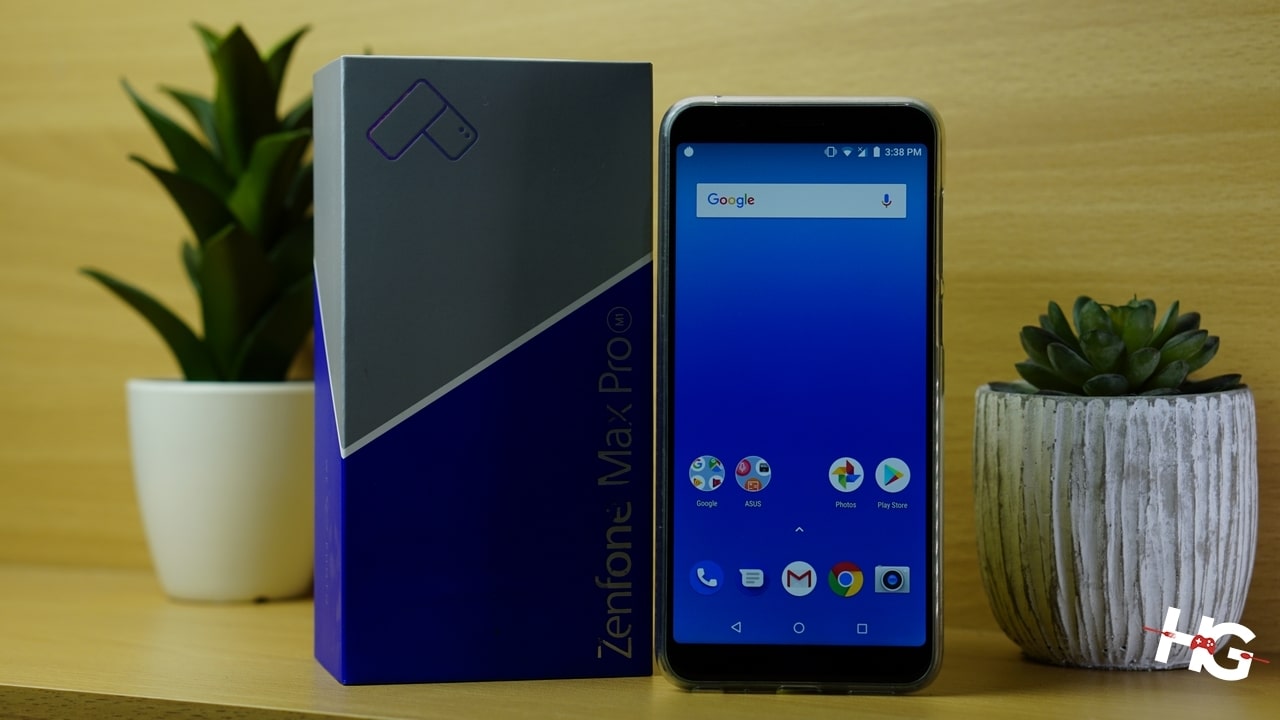
| Chipset | Qualcomm Snapdragon 636 |
| Screen | 5.99-inch IPS, FullHD+ (2160 x 1080), 18:9, 450nits, 1500:1 contrast ratio, 85% NTSC color gamut, |
| RAM | 3GB |
| OS | Android 8.1 Oreo (planned Android 9.0 update) |
| Rear Camera | 13MP f/2.2 primary, LED Flash; 5MP wide-angle secondary |
| Front Camera | 8MP f/2.0, LED Flash |
| Storage | 32GB expandable up to 256GB via microSD slot |
| Network | Triple-tray, Dual SIM, 4G LTE |
| Connectivity | WiFi, Bluetooth, GPS, A-GPS, GLONASS, |
| Others | microUSB (USB 2.0), 3.5mm jack, Fingerprint Scanner, Face Unlock, GPS, A-GPS, GLONASS, BDS, 5-finger recognition, 5-magnet speaker |
| Battery | 5,000mAh |
| Colors | Meteor Silver, Deep Sea Black |
There’s also a 4GB variant of the ASUS ZenFone Max Pro M1 that sports better cameras and more RAM.
Unboxing

As with the latest lineup of Max devices from ASUS, the ZenFone Max Pro M1 is encased in a gray/blue box that contains most of the accessories that one would need from a smartphone. Inside is a silicone clear case, earphones with extra silicone ear tips, a SIM ejector pin, a wall charger, a MicroUSB cable, and documentation.
Design and Features
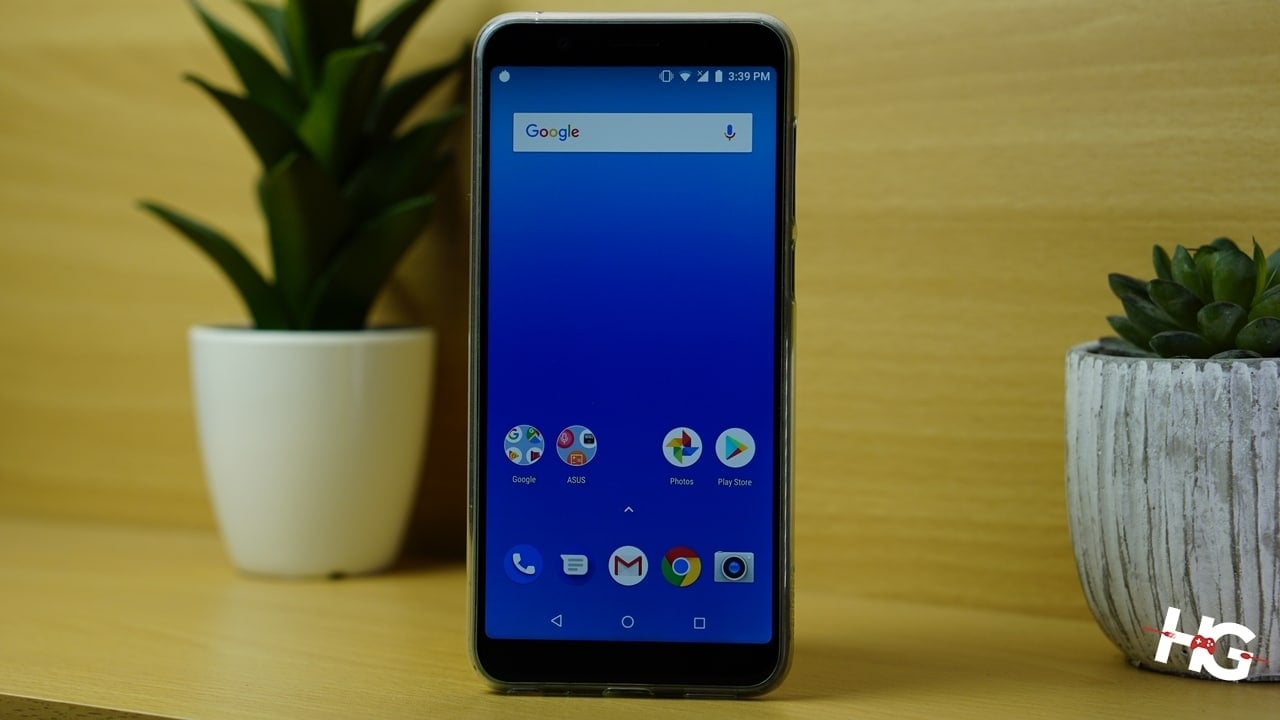
The ASUS ZenFone Max Pro M1 ditches the notch that so many smartphones nowadays have and instead relegates itself to a 5.99-inch 18:9 IPS display with a 2160 x 1080 resolution. ASUS say that the ZenFone Max Pro M1’s display can output 450nits of brightness, a 1500:1 contrast ratio, as well as an 85% NTSC color gamut.
On our experience, the ASUS ZenFone Max Pro M1’s display is fairly average when it comes to color accuracy and contrast. Colors do not really pop out compared to other smartphones but it also does not display them as drab. The screen can also be seen clearly under direct sunlight so users won’t have any problems viewing their photos or playing games outside.
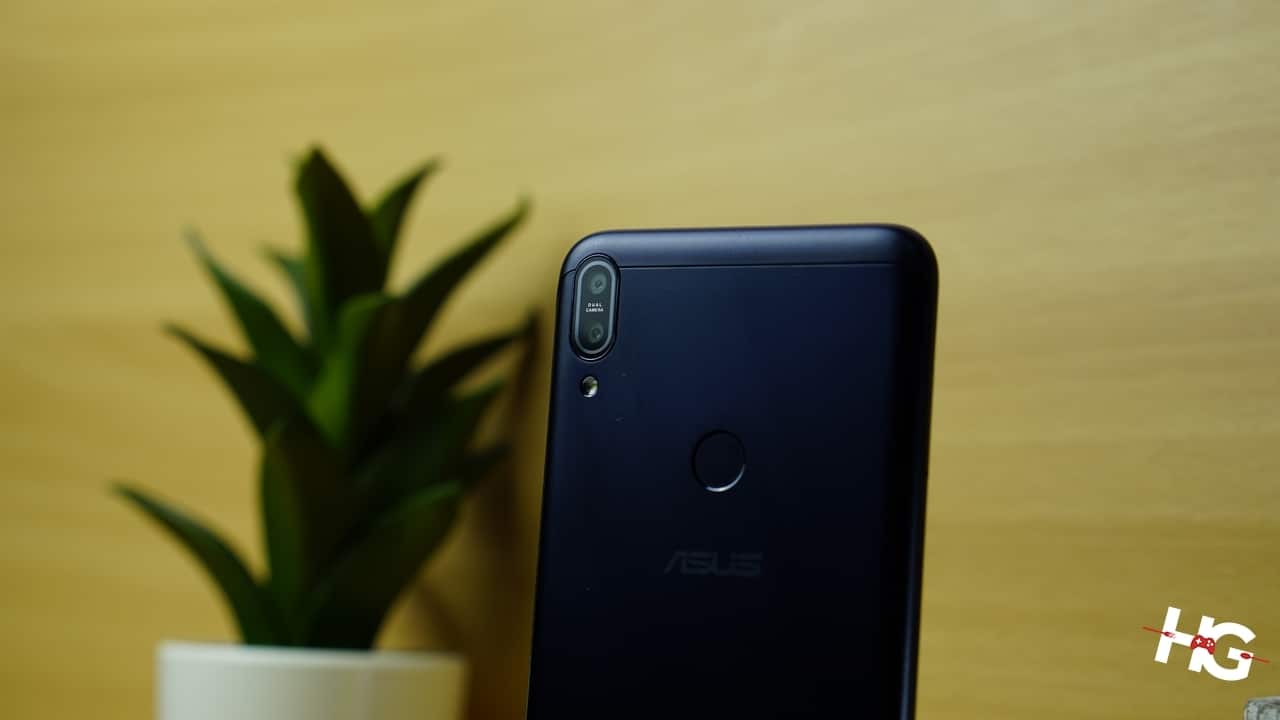
As for its cameras, the ASUS ZenFone Max Pro M1 comes with a single 8MP f/2.0 shooter at the front with a dedicated LED flash while the rear is populated by a 13MP f/2.2 primary and a 5MP wide-angle secondary shooter with LED Flash.
To ensure security of the user, the smartphone comes with a fingerprint sensor at the back and facial recognition at the rear. The fingerprint scanner isn’t the fastest sensor in the market but the facial recognition of the ZenFone Max Pro M1 is fast enough that it’s worth opting to use the user’s face to unlock the smartphone.
Since this smartphone is part of the ASUS ZenFone Max lineup, it is expected for it to have a large battery. Inside its plastic shell is a massive 5,000mAh battery that’s topped up by a MicroUSB port at the bottom of the device.
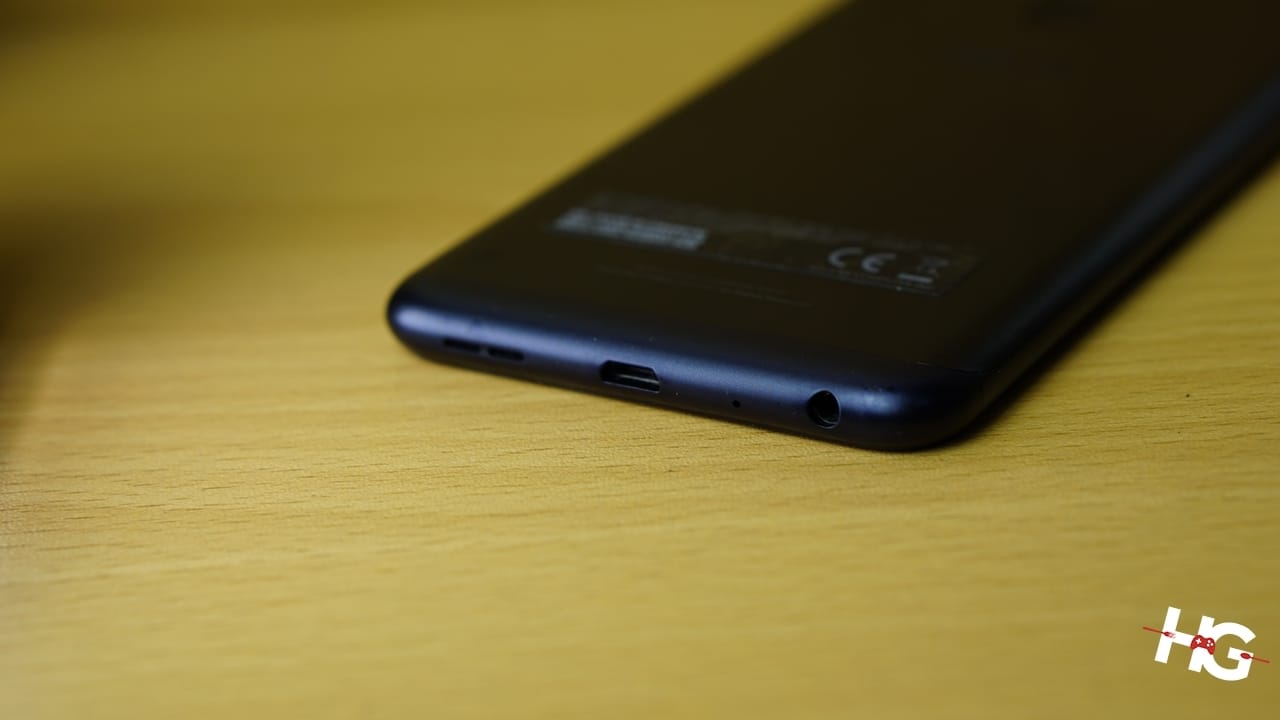
The ASUS ZenFone Max Pro M1 also comes with a 3.5mm audio jack at the bottom, a bottom-firing speaker as well as a triple cut SIM tray that allows for dual SIM cards and a dedicated microSD slot that can expand the expand the 32GB storage to 256GB.
All in all, the ASUS ZenFone Max Pro M1 doesn’t really distinguish itself from other smartphones from the Max lineup. Instead, it builds upon the foundation that it predecessors laid and improves on the Max formula by providing a better screen and battery life.
User Interface
Unlike most smartphones from ASUS, the ZenFone Max Pro M1 doesn’t have the brand’s trademark ZenUI. This means that the smartphone runs purely on Android 8.0 Oreo. This leads more resources being dedicated to apps such as games. We have to say that it is a bit odd to hold an ASUS smartphone that does not have ZenUI. It’s a bit of a learning curve, especially if one’s coming from another ASUS smartphone.
Entertainment

The 18:9 display of the ZenFone Max Pro M1 does just right in movies and videos. Since there’s no notch, all of the screen real estate will be used when watching. Audio, however, does detract from the overall experience as the bottom firing speakers doesn’t do justice at the higher frequencies of the spectrum. Audio may sound a bit tinny especially when blasting music at maximum volume.
Camera
The camera app on the ASUS ZenFone Max Pro M1 is generic to say the least. It does have most of the features that users may want. These include: continuous, beautification, depth of field, as well as different presets for changing conditions. These work from a day-to-day basis but the camera app on the smartphone doesn’t really have anything special to set it apart from its contemporaries.
The 13MP f/2.2 rear primary shooter takes good shots under well-lit conditions. Colors and contrast are fairly good. It does stumble a bit in low light conditions as most photos taken will have noticeable grain.
As with most wide-angle shooters of from ASUS, there’s a trade-off in using the 5MP wide-angle secondary camera. It might fit more into one image but since there’s significant reduction of pixel density, photos will look grainy under close inspection.
Performance and Benchmarks
The ASUS ZenFone Max Pro M1 is powered by a Qualcomm Snapdragon 636 and 3GB RAM. It’s surprising that such as smartphone in its price range can have this kind of SoC especially if we consider that it’s the same chip found on the ZenFone 5.
As far as benchmarks go, the ZenFone Max Pro M1 was able to score 114553 in AnTuTu and 6105 in PCMark Work 2.0. In the real world, there’s barely any lag associated with the smartphone and since it runs on pure Android 8.0 Oreo, there’s minimal interference in the overall experience.
Battery Life
Powering the ASUS ZenFone Max Pro M1 is a 5,000mAh battery that should supply ample battery life for the whole day. Under synthetic loads, the smartphone will last just under 12 hours with medium brightness and volume. In the real world, however, you’d be hard pressed to drain the battery of the ZenFone Max Pro M1.
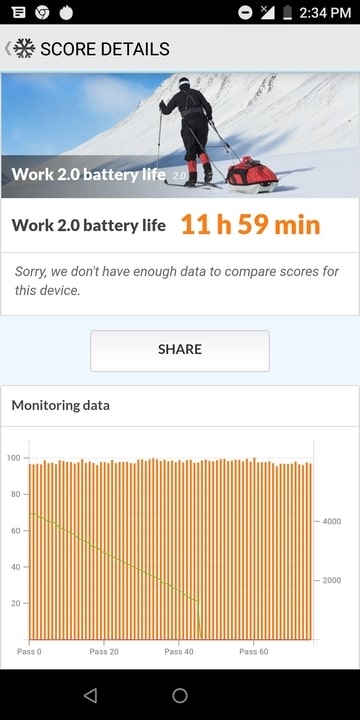
Under heavy load with data on and occasional hotspot usage, the ASUS ZenFone Max Pro M1 will last its users for around a day and a half. An impressive duration fitting of the ASUS ZenFone Max name moniker.
Conclusion
Priced at PhP 9,995 for the 3GB RAM model and PhP 13,995 for the 4GB model, the ASUS ZenFone Max Pro M1 isn’t exactly a stand out in the crowd. With the absence of ASUS’ ZenUI, some features were severely missed with the smartphone.
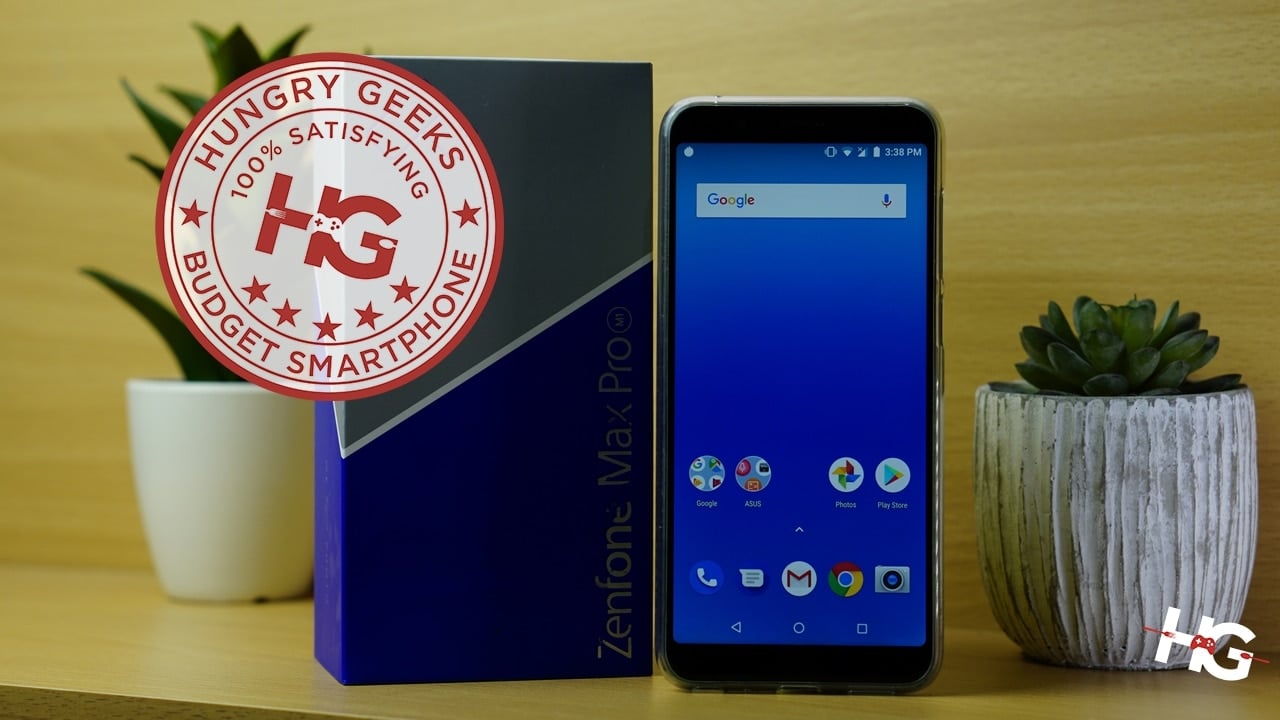
Despite that, the smartphone still delivered stellar numbers in performance as well as battery. With a no-nonsense approach in all fronts, we’re giving the ASUS ZenFone Max Pro M1 our 100% Satisfying Budget Smartphone award. If you’re just looking for a smartphone that just works and will last you for a day or two, then the ASUS ZenFone Max Pro M1 might be for you.
